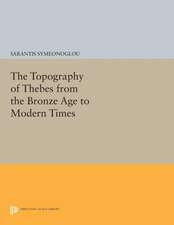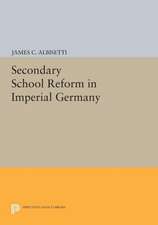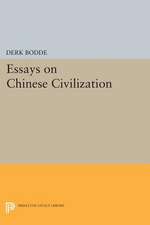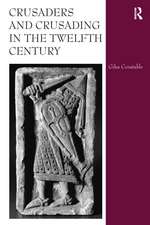The Arab Spring and Arab Thaw: Unfinished Revolutions and the Quest for Democracy
Autor John Davisen Limba Engleză Hardback – 6 noi 2013
| Toate formatele și edițiile | Preț | Express |
|---|---|---|
| Paperback (1) | 469.34 lei 6-8 săpt. | |
| Taylor & Francis – 19 oct 2016 | 469.34 lei 6-8 săpt. | |
| Hardback (1) | 824.40 lei 6-8 săpt. | |
| Taylor & Francis – 6 noi 2013 | 824.40 lei 6-8 săpt. |
Preț: 824.40 lei
Preț vechi: 1105.41 lei
-25% Nou
Puncte Express: 1237
Preț estimativ în valută:
157.77€ • 162.98$ • 131.30£
157.77€ • 162.98$ • 131.30£
Carte tipărită la comandă
Livrare economică 26 martie-09 aprilie
Preluare comenzi: 021 569.72.76
Specificații
ISBN-13: 9781409468752
ISBN-10: 1409468755
Pagini: 310
Dimensiuni: 156 x 234 x 25 mm
Greutate: 0.7 kg
Ediția:New.
Editura: Taylor & Francis
Colecția Routledge
Locul publicării:Oxford, United Kingdom
ISBN-10: 1409468755
Pagini: 310
Dimensiuni: 156 x 234 x 25 mm
Greutate: 0.7 kg
Ediția:New.
Editura: Taylor & Francis
Colecția Routledge
Locul publicării:Oxford, United Kingdom
Notă biografică
Dr John Davis is at the Trinity Washington University, USA. His specialities include: International Terrorism, American Foreign Policy, International Law, and National Security, and area concerns are The Middle East and Africa.
Recenzii
’A significant contribution to the emerging literature which aptly demonstrates that the era of protest and change in the Middle East has been and will continue to be non-linear, multifaceted and ultimately, far from finished for years to come.’ Shadi Mokhtari, American University, USA
Cuprins
Introduction: The Arab Spring and Arab Thaw, John Davis; Part 1 Revolts and Counter Revolts in a Turbulent Region; Chapter 1 New Discourse, Old Orientalism: A Critical Evaluation of the “Arab Spring for Women”?, Laura Sjoberg, Jonathon Whooley; Chapter 2 What Makes Yemen’s Spring Different?, Ahmad Ali Al-Ahsab; Chapter 3 Libya’s Revolution: A Transformative Year, Mohamed A. El-Khawas; Chapter 4 Revolution in Syria: The Struggle for Freedom in a Regional Battle, Radwan Ziadeh; Chapter 5 Egypt’s Revolution: A Two-Year Journey, Mohamed A. El-Khawas; Part 2 Regional and Non-Regional Institutional Involvement, American Perspectives and Winners and Losers; Chapter 6 The GCC Countries and the Arab Spring: Between Outreach, Patronage and Repression 1 This chapter was originally published as IAI Working Paper 1209 in March 2012., Silvia Colombo; Chapter 7 The Arab League and the Arab Uprisings, Bruce Maddy-Weitzman; Chapter 8 The EU and the Arab Spring: Interests, Ideals or Irrelevance?, David Jervis; Chapter 9 The Arab Spring and Arab Thaw: The Obama Administration’s Response to a Region in Turmoil 1 An earlier version of this chapter appeared in Trinity Magazine (Spring 2012). See John Davis, “US Policy and the Arab Awakening,” pp. 16–18., John Davis; Chapter 10 The Unfinished Revolutions: Evaluating the Winners and Losers, John Davis;
Descriere
The Arab Spring and Arab Thaw examines a range of successful and unsuccessful protest strategies and counter revolutionary tactics employed by protestors and autocratic regimes. Contributors explore the reactions of the USA, EU and Arab League to events in the region and provide insight as to the gendered dimensions of the struggle along with the ethnic and tribal divisions that continue to impact the post-revolt period. By addressing these critical queries the book demonstrate how the Arab Spring has evolved into a protracted Arab Thaw that continues to profoundly affect regional and international politics.






















